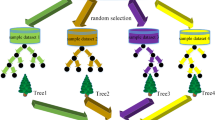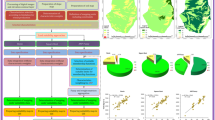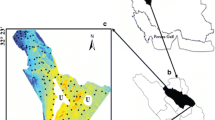Abstract
The research of soil classification and soil grade evaluation is often based on fuzzy theory. So, the traditional method has an inevitable problem about weight matrix which given by some experts, and the final result can be influenced by artificial factors. The essentials of fuzzy synthetically judge is to handle the data of high dimension. That is to reducing the dimension number. The weight matrix in fuzzy theory is corresponding to low dimension projection value of each index. But we can’t define whether the weight matrix given by experts is the best projection value or not. So, the authors apply a new technique of falling dimension named projection pursuit to soil study, through using the improved real coding based accelerating genetic algorithm to optimize the projection direction. Thus, it can transfer multi-dimension data into one dimension data, through searching for the optimum projection direction to realize the soil classification and its grade evaluation. The method can avoid the artificial disturbance, and acquire preferably effect. Thus, the paper provides a new method to the research of soil classification and grade evaluation.
Similar content being viewed by others
References
HU Jin-ming, LIU Xing-tu, 1999. Evaluate and analyze the soil quality movement in Sanjiang Plain [J]. Scientia Geographica Sinica, 19(5): 417–421. (in Chinese)
JIN Ju-liang, DING Jing, 2000. Genetic Arithmetic and Its Application to Water Science[M]. Chengdu: Sichuan University Publishing Company: 42–47. (in Chinese)
LIU Xing-jiu, 1988. Applying fuzzy clustering to soil classification [J]. Journal of Northeast Agricultural College, (2): 122–126. (in Chinese)
XIANG Jing-tian, SHI Jiu-en, 2000. The Statistics Method of Data Processing in the Non-linearity System [M]. Beijing: Science Press, 172, 190–192. (in Chinese)
ZHANG Xin-li, 2000. Projection Pursuit ant Its Application to Water Resources [D]. Chengdu, 67–73. (in Chinese)
ZHOU Ming, SUN Shu-dong, 2000. The Theory of Genetic Arithmetic and Its Application[M]. Beijing: National Defense Industry Publishing Company, 4–7, 37–38. (in Chinese)
Author information
Authors and Affiliations
Additional information
Fundation item: Under the auspices of China Postdoctoral Science Fund and the Youth Fund of Sichuan University (432028).
Biography: FU Qiang (1973 – ), male, a native of Jinzhou City, Liaoning Province, associate professor, postdoctor in Sichuan University. His research interests include building up mathematical models and its optimization about water saving irrigation, agricultural water resources and agricultural system engineering.
Rights and permissions
About this article
Cite this article
Fu, Q., Lu, Tg. & Fu, H. Applying PPE model based on raga to classify and evaluate soil grade. Chin. Geograph.Sc. 12, 136–141 (2002). https://doi.org/10.1007/s11769-002-0021-0
Received:
Issue Date:
DOI: https://doi.org/10.1007/s11769-002-0021-0




